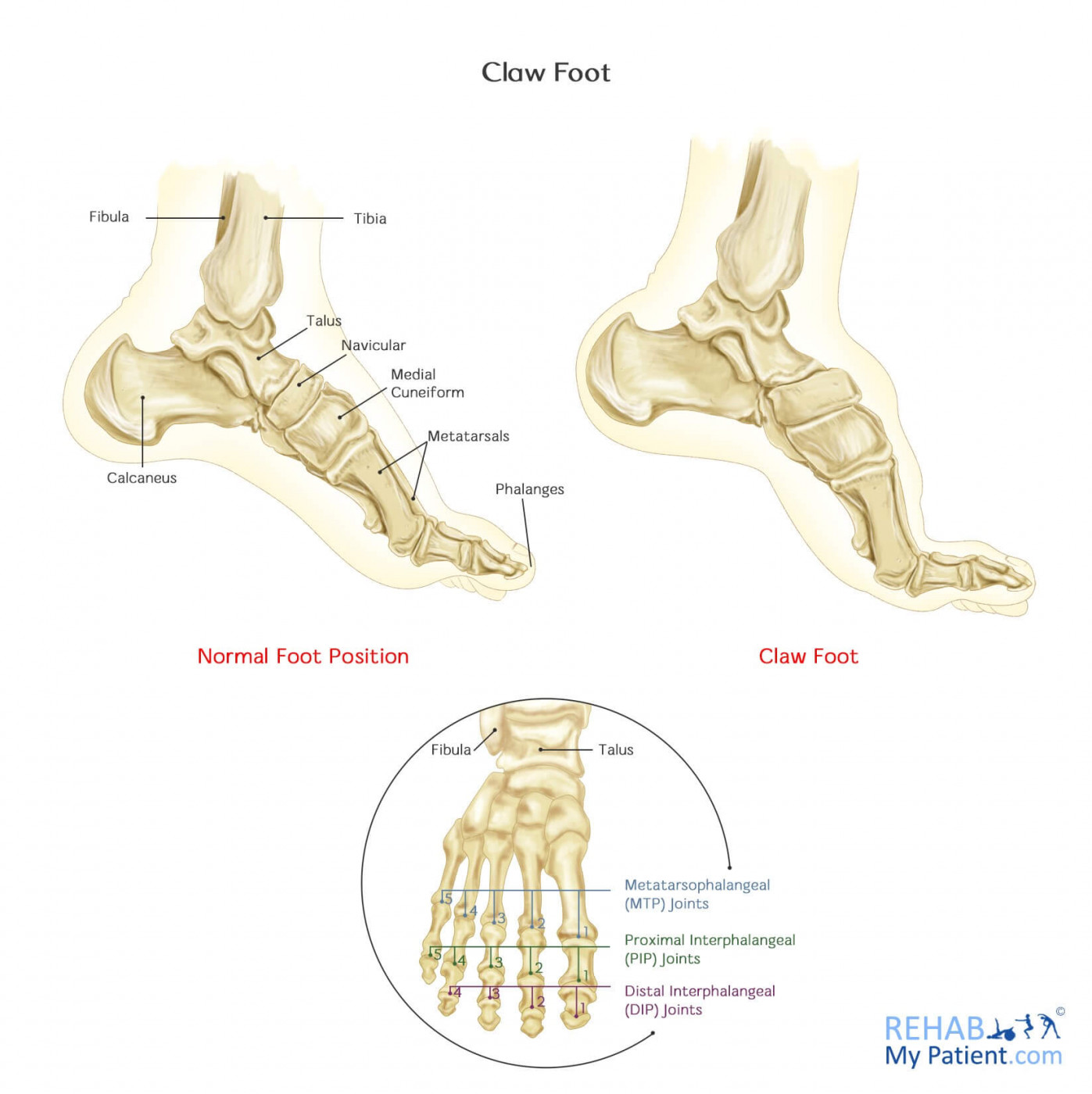
Claw foot is a type of foot deformity. The toe that is closest to the ankle is bent upward and the other joints are bent downward. Essentially, the toe resembles a claw. The condition can be present at birth or develop later on in life because of other types of disorders. It can be caused by a nerve problem within the legs or the spinal cord. Most of the time, the cause is unknown.
The condition is not harmful in and of itself. It might be the first sign of a more serious problem within the nervous system. You may end up with calluses and pain on the top of the toe that lies over the first joint, but instances occur where it is painless. This particular condition can also cause problems with wearing shoes. It’s very common to have difficulty walking and changes in gait.
Claw Foot Anatomy
The toes and the forefoot are composed of several bones. All of the four smaller toes begin with a metatarsal bone in the forefoot.

As you move down the foot from the metatarsal, there are three smaller bones (phalanges). First, is the proximal phalanx. The middle phalanx comes next. Last is the distal phalanx.
The bones of the toes connect to form the toe joints. The MTP joint is the first one connecting the foot and the toe together. The MTP joints form the ball of the foot. The second joint is the PIP joint, while the last one of the DIP joint. All of the joints are surrounded by a capsule that is composed of ligaments holding the bones together. Two tendons run down the base of each toe, which allows you to curl your toes. A tendon running along the top of the toe helps to raise it.
How to Treat Claw Foot:
- PIP Joint Arthroplasty
One of the main procedures to correcting this deformity is that of PIP arthroplasty. In this particular procedure, an incision is created on top of the joint. Once the joint is visible, the end of the proximal phalanx is removed for shortening the toe and relaxing the contracture surrounding the joint. Sutures or metal pins are used to hold the toe in place until it is healed.
When the joint heals, it will form scar tissue that connects the two bones together and replaces the area where the joint previously was. The scar tissue provides you with a small range of motion between the bones, while preventing rubbing and pain.
- MTP Joint Release
If you are suffering with clawing, releasing the MTP joint can help relieve the joint and allow the phalanx to return to its correct position. An incision is made on top of the toe above the MTP joint. The tendons and ligaments are released until the toe can freely move back into alignment. A metal pin is used until the soft tissue is healed. It will remain in place for up to four weeks.
Tips:
- Choose the correct shoes to prevent your feet from being constricted. You may need to visit a specialist shoe fitter if the problem is particularly bad.
- Perform static stretching to help loosen the muscles and structures of the foot to make it more flexible. Your therapist will advise you of the correct exercises.
- Consider getting custom orthotics in your shoes.
- Wearing the wrong shoes will amplify the problem.
- Those who have high arches should consider shoes that have ample cushioning (arch support).
Sign Up
Sign up for your free trial now!
Get started with Rehab My Patient today and revolutionize your exercise prescription process for effective rehabilitation.
Start Your 14-Day Free Trial